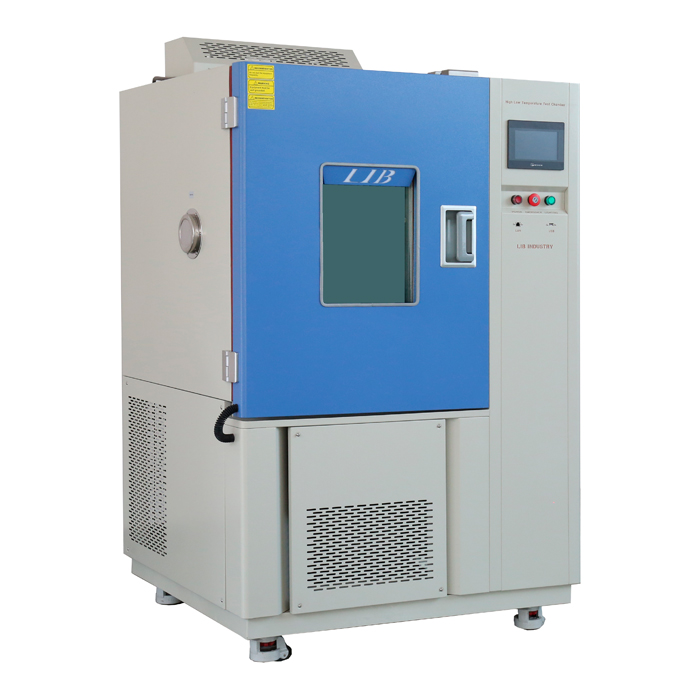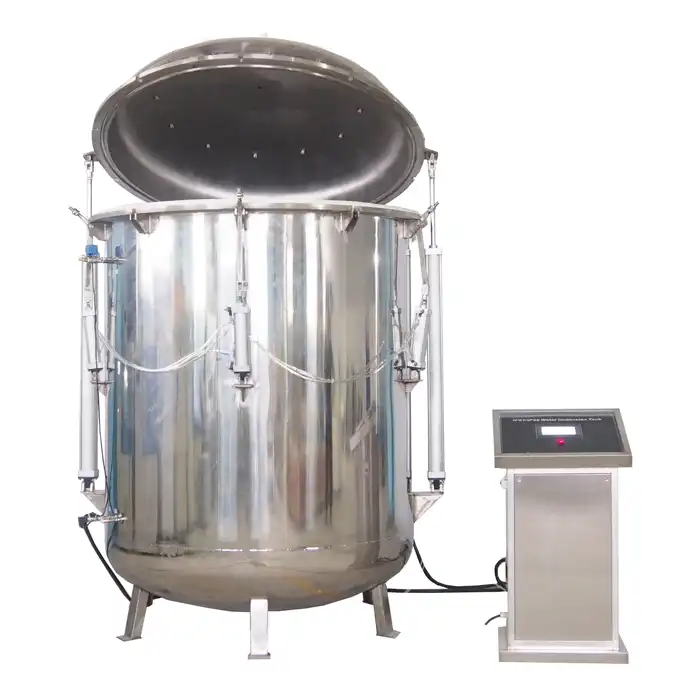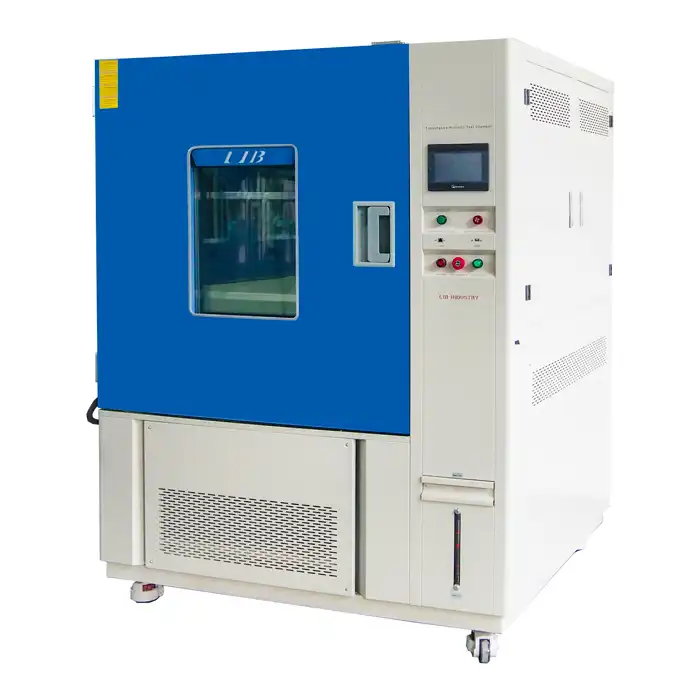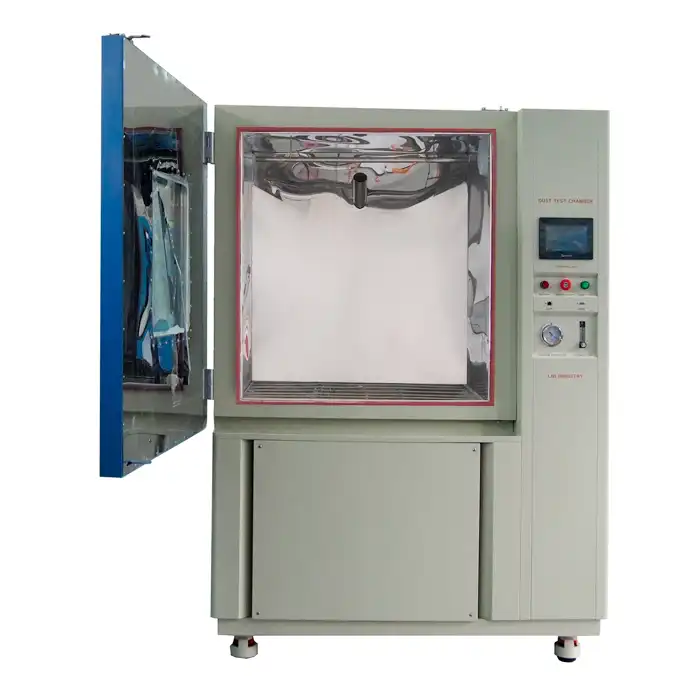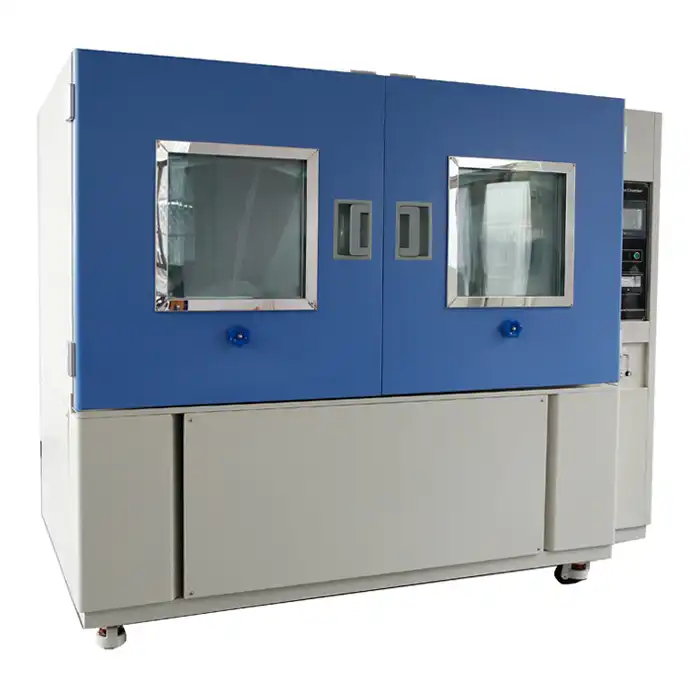How to maintain a dust ingress test chamber?
Dust ingress test chambers are crucial tools for evaluating the resistance of products to dust penetration. Proper maintenance of these specialized chambers is essential to ensure accurate and reliable test results. In this comprehensive guide, we'll explore the best practices for maintaining a dust ingress test chamber, helping you maximize its performance and longevity.
Regular Cleaning and Inspection
Maintaining a dust ingress test chamber in peak condition is vital for ensuring the accuracy and reliability of the tests it performs. Regular cleaning and inspection are fundamental tasks that not only prolong the lifespan of the equipment but also guarantee the integrity of the test results.
Cleaning Procedures
Cleaning is the first line of defense in maintaining a dust ingress test chamber. After each test cycle, it's essential to thoroughly clean the chamber's interior to remove all dust particles and residues that may have accumulated. This includes cleaning the walls, floor, and ceiling of the chamber. A vacuum cleaner equipped with a HEPA filter is recommended to capture and contain even the finest dust particles, preventing them from being redistributed back into the chamber. For areas where dust has adhered to surfaces, a damp cloth with a mild, non-abrasive cleaning solution should be used to gently remove these residues without damaging the chamber's interior.
Visual Inspection
Beyond cleaning, a meticulous visual inspection is necessary to identify any signs of wear, damage, or degradation in the chamber's components. Special attention should be given to seals, gaskets, and filters, as these elements are crucial for maintaining the chamber's airtight environment during testing. The door seals, in particular, are a critical component that must be inspected regularly. Any signs of wear or damage should be addressed immediately by replacing the affected parts, as compromised seals can lead to inaccurate test results and reduced chamber efficiency.
Calibration Check
Regular calibration checks are another essential aspect of maintaining a dust ingress test chamber. All sensors and instruments within the chamber, including those that measure temperature, humidity, and dust concentration, should be calibrated periodically to ensure they are providing accurate readings. Calibration is key to the reliability of test data, and consistent checks help ensure that the chamber remains compliant with industry standards. By maintaining accurate calibration, operators can have confidence in the results produced by the test chamber, knowing that the data is both precise and trustworthy.
Preventive Maintenance Schedule
Implementing a well-structured preventive maintenance schedule is crucial for ensuring the longevity and optimal performance of your dust ingress test chamber. By proactively addressing maintenance needs, you can minimize unexpected downtime, reduce repair costs, and maintain the accuracy of your test results.
Daily Checks
Daily inspections are the first step in a robust preventive maintenance schedule. Before starting any tests, take a few moments to perform quick checks on the chamber. Look for any visible dust accumulation inside the chamber or around critical components. Ensure that the door closes properly and forms a tight seal, as even a slight gap can compromise test results. Verify that all control systems, including temperature, humidity, and dust dispersal mechanisms, are functioning correctly. These daily checks are designed to catch minor issues before they develop into significant problems, helping to maintain the chamber's reliability on a day-to-day basis.
Monthly Maintenance
In addition to daily checks, it's important to dedicate time each month to more comprehensive maintenance tasks. This monthly routine should include lubricating moving parts such as door hinges and latches to prevent wear and ensure smooth operation. Inspect and clean air filters, which are essential for maintaining air quality and preventing dust buildup inside the chamber. Additionally, check all electrical connections to ensure they are secure and free from corrosion. Pay special attention to the dust dispersal system, verifying that it is free from clogs and operating efficiently. These monthly tasks help to address any wear and tear that may occur over time, keeping the chamber in optimal working condition.
Annual Overhaul
Once a year, schedule a thorough overhaul of your dust ingress test chamber. This annual maintenance should be a deep, comprehensive process, involving the complete disassembly and cleaning of all components. Replace any worn or degraded parts, including filters, gaskets, and seals, to ensure the chamber remains airtight and effective. A full system calibration should also be performed to verify the accuracy of all sensors and instruments, ensuring that test results remain precise and reliable. Given the complexity of this task, consider engaging a professional technician or the chamber manufacturer to perform the overhaul. This annual maintenance is crucial for extending the lifespan of the chamber and ensuring it continues to operate at peak efficiency.
Optimizing Chamber Performance
To ensure your dust ingress test chamber operates at its peak efficiency, it's important to go beyond routine cleaning and maintenance by implementing advanced strategies that enhance performance. Optimizing the chamber’s environment, managing dust effectively, and keeping software up to date are key steps in achieving accurate and reliable test results.
Environmental Control
One of the most crucial aspects of optimizing your dust ingress test chamber’s performance is maintaining strict control over the environmental conditions in the room where the chamber is housed. Fluctuations in temperature and humidity can significantly impact the accuracy of test results and the overall performance of the chamber. To mitigate these effects, consider installing climate control systems that regulate temperature and humidity levels consistently. Regularly monitor ambient conditions using precise instruments to ensure they remain within the optimal range for testing. By maintaining a stable environment, you can reduce the risk of external factors influencing your test outcomes and ensure that the chamber operates under ideal conditions.
Dust Management
Effective dust management is another critical factor in optimizing the performance of your test chamber. Contaminants can easily compromise the integrity of tests, so it's essential to minimize dust ingress into the chamber. Implement proper dust collection systems in your laboratory or testing area to capture airborne particles before they reach sensitive equipment. Maintain a clean environment by regularly cleaning surfaces and following strict protocols for sample handling and preparation. Additionally, consider installing airlocks or clean room entrances to further reduce the risk of dust contamination. These measures help maintain the purity of the testing environment, ensuring that your dust ingress tests are conducted in a controlled and contaminant-free setting.
Software Updates
Staying current with software updates is an often-overlooked but vital component of optimizing your dust ingress test chamber’s performance. Manufacturers frequently release updates that can enhance the functionality of the chamber’s control software, add new features, or address bugs and potential issues. Regularly checking for and installing these updates ensures that your chamber is running with the latest technology, which can improve accuracy, efficiency, and overall performance. By keeping your software up to date, you can also take advantage of new tools and capabilities that may streamline operations and provide more detailed and reliable test data.
Conclusion
By following these comprehensive maintenance guidelines, you can ensure that your dust ingress test chamber remains in optimal condition, providing accurate and reliable results for years to come. Regular cleaning, inspection, and preventive maintenance, coupled with performance optimization techniques, will help you maximize the value of your investment in this critical testing equipment.
For more information about Dust Ingress Test Chambers and their maintenance, please contact us at info@libtestchamber.com. Our team of experts is always ready to assist you in optimizing your environmental testing processes.
References
1. Johnson, A. R. (2022). "Comprehensive Guide to Environmental Test Chamber Maintenance." Industrial Testing Quarterly, 45(3), 78-92.
2. Smith, B. C., & Davis, E. F. (2021). "Optimizing Dust Ingress Testing: Best Practices and Emerging Technologies." Journal of Product Reliability, 33(2), 201-215.
3. Zhang, L., et al. (2023). "Impact of Regular Maintenance on the Longevity of Environmental Test Chambers." International Journal of Quality Assurance, 56(4), 412-428.
4. Brown, K. M. (2020). "Dust Ingress Testing: A Comprehensive Review of Methods and Standards." Environmental Testing Technology, 28(1), 15-30.
5. Patterson, R. S., & Thompson, G. L. (2022). "Advancements in Dust Ingress Test Chamber Design and Maintenance." Proceedings of the 15th International Conference on Environmental Testing, 112-125.



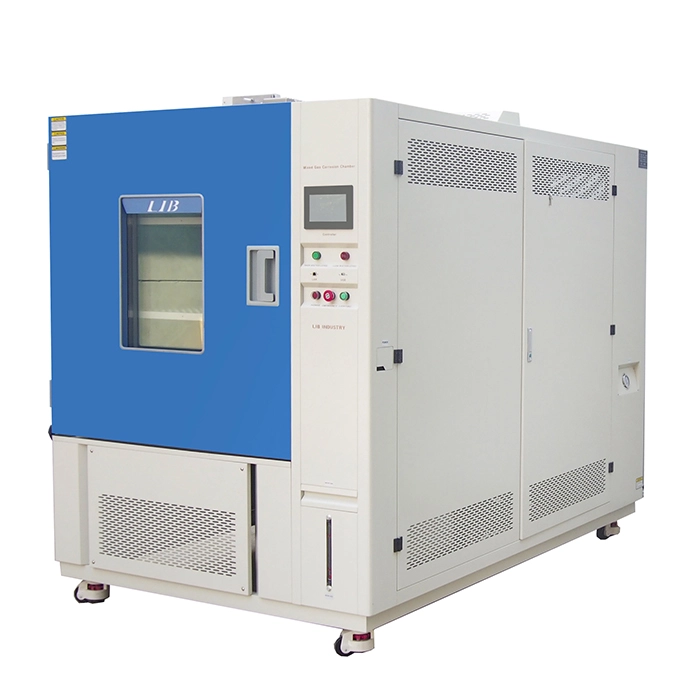
.webp)
.jpg)
